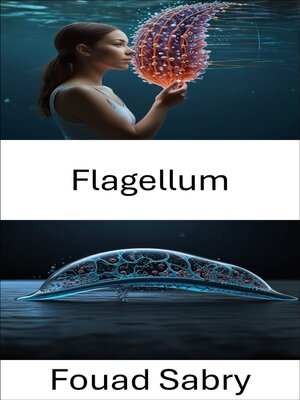Flagellum
ebook ∣ Propelling the Future of Biohybrid Microswimmers Through Nature Inspired Motion · Biohybrid Microswimmer
By Fouad Sabry

Sign up to save your library
With an OverDrive account, you can save your favorite libraries for at-a-glance information about availability. Find out more about OverDrive accounts.
Find this title in Libby, the library reading app by OverDrive.



Search for a digital library with this title
Title found at these libraries:
| Library Name | Distance |
|---|---|
| Loading... |
The microscopic world is teeming with movement, driven by nature's intricate biological machines. Flagellum delves into the fascinating mechanics of biohybrid microswimmers, bridging biology and innovation. Whether you are a scientist, engineer, student, or enthusiast, this book offers insights into the principles behind cellular propulsion and their applications in advanced technologies.
Chapters Brief Overview:
1: Flagellum – Unveiling the structure and function of the primary motility organelle in microorganisms.
2: Twitching motility – Understanding movement driven by pili rather than flagella in microbial navigation.
3: Axoneme – Exploring the cytoskeletal core powering eukaryotic flagella and cilia motion.
4: Undulipodium – Examining eukaryotic flagella's role in cellular locomotion and signaling.
5: Chemotaxis – Investigating how cells detect and move toward chemical stimuli in their environment.
6: Motility protein A – Analyzing a key component of flagellar function and bacterial locomotion.
7: Zoospore – Exploring flagellated spores and their significance in microbial reproduction.
8: Rhizoplast – Investigating the cytoskeletal elements supporting flagellar motion in certain cells.
9: Appendage – Differentiating external structures contributing to microbial motility.
10: Pilus – Understanding filamentous projections essential for adhesion and movement.
11: Evolution of flagella – Tracing the development of flagellar motility across biological domains.
12: Cytoskeleton – Examining the structural framework that enables cellular motion.
13: Protist locomotion – Understanding the diverse movement strategies of unicellular eukaryotes.
14: Tubulin – Exploring the protein fundamental to eukaryotic flagella and microtubules.
15: Marine prokaryotes – Investigating the unique motility adaptations of oceandwelling bacteria.
16: Type III secretion system – Examining bacterial flagella's evolutionary link to molecular transport.
17: Vibrio – Understanding how this genus of bacteria utilizes flagella for movement and virulence.
18: Virulence factor – Exploring flagella's role in pathogenicity and host interactions.
19: Cell (biology) – Examining the broader cellular context in which flagella operate.
20: Archaellum – Unveiling the distinct motility structures of archaea.
21: Bacterial motility – Summarizing the diverse mechanisms microbes employ for movement.
From fundamental biology to cuttingedge applications, Flagellum is an indispensable resource that reveals how nature's smallest machines inspire technological breakthroughs. This book is a mustread for those eager to explore the fusion of biology and engineering in microscale locomotion.







